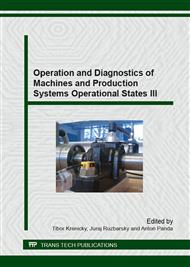[1]
E.J. Vinarcik, High Integrity Die Casting Processes, John Wiley and Sons, New York, (2003).
Google Scholar
[2]
S. Gaspar, J. Pasko, Metal flow velocity in an intake port in the process of die casting, Advanced Materials research 705 (2013) 177-180.
DOI: 10.4028/www.scientific.net/amr.705.177
Google Scholar
[3]
S. Gaspar, J. Pasko, M. Puskar, Effect of pressing speed and specific pressure in pressure mold cavity on values of mechanical properties of aluminium cast of lower weight category made from EN AC 47100 alloy, International Journal of Cast Metal Research 27/5 (2014).
DOI: 10.1179/1743133614y.0000000107
Google Scholar
[4]
Information on www. fondarex. com.
Google Scholar
[5]
P. Bigos, M. Puskar, L. Pesek, Assessment of the critical places in the casted piston based on a local strength – microstructure model, Chemical Letters 106/S3 (2012) 379-382.
Google Scholar
[6]
E. Ragan et al., Die casting, VMV Prešov, (2007).
Google Scholar
[7]
Ľ. Bicejová, Water jet technology head vibration generation due to selected technology parameters fluctuation effect during alloy cutting, Applied Mechanics and Materials 308 (2013) 81-86.
DOI: 10.4028/www.scientific.net/amm.308.81
Google Scholar
[8]
J. Mascenik, The evacuation of pressure moulds as progressive developments of die casting process, Acta Technica Conviniensis 5/3 (2012) 25-26.
Google Scholar
[9]
J. Ruzbarsky, J. Zarnovsky, Optimization of parameters in the compression moulding process of thermoset products, Advanced Materials Research 801 (2013) 61-66.
DOI: 10.4028/www.scientific.net/amr.801.61
Google Scholar
[10]
J. Ruzbarsky, Dynamics of core taking out at die casting, Applied Mechanics and Materials 616 (2014) 244-251.
DOI: 10.4028/www.scientific.net/amm.616.244
Google Scholar
[11]
E. Ragan, J. Dobransky, P. Baron, M. Kočiško, J. Svetlík, Dynamic of taking out molding parts at injection molding, Metalurgija 51/4 (2012) 567-570.
Google Scholar
[12]
T. Krenický, Specifics of diagnostics and vibration damping in die casting technology (Špecifiká diagnostiky a tlmenia vibrácií v technológii tlakového liatia), in: Scientific Papers: Operation and diagnostics of machines and production systems operational states, Tribun EU, Brno, 2008, pp.119-123.
Google Scholar
[13]
L. Behalek, J. Dobransky, Conformal cooling of the injection moulds, Applied Mechanics and Materials 308 (2013) 127-132.
Google Scholar


